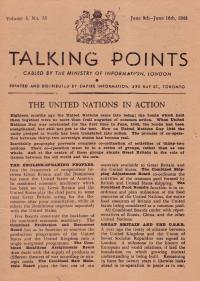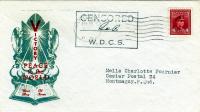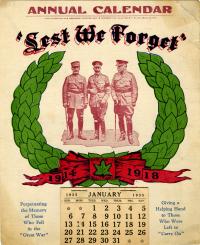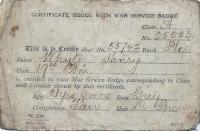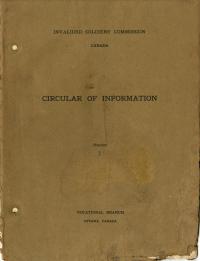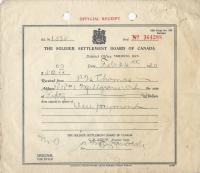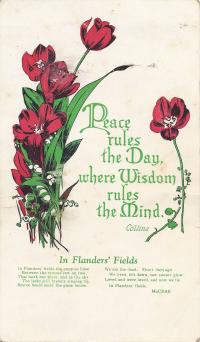Returning
The United Nations in Action
This pamphlet, published to mark United Nations Day in 1943, looked forward to a more peaceful world after the Second World War.
A world at peace ...
This cover marked a return to peace, yet ironically bears the censor stamp of the War Disease Control Station, set up at Grosse Île, Quebec, to study measures that might be taken in the event of germ warfare.
Help an old soldier
To make ends meet, ex-soldiers (and probably con artists impersonating ex-soldiers) sold postcards, booklets, trinkets - and calendars.
Proof of veteran status
The War Service Badge, and this certificate, which verified that the holder had the right to wear it, was intended to combat the problem of the fake veteran after the First World War. Henry Whyte of St George, Ontario, served with the 19th Battalion.
Getting them back to work
The First World War left in its wake an unprecedented number of disabled ex-soldiers, and the Canadian government struggled to provide meaningful job training for them. Later renamed the Invalided Soldiers Commission, the Vocational Branch published a circular with book reviews, reports on training initiatives in different cities, and lists of jobs that might be suitable for a retrained veteran.
Payments from a soldier-settler
British immigrant Percy Thomas enlisted in Toronto in 1916 and, after he was demobilized, received land from the government's Soldier Settlement Board. Receipts show him repaying the debt into the early 1930s.
Peace rules the Day
This card, featuring John McCrae's poem "In Flanders Fields," was preserved by a soldier of the Royal Munster Fusiliers serving in Rangoon, Burma.

